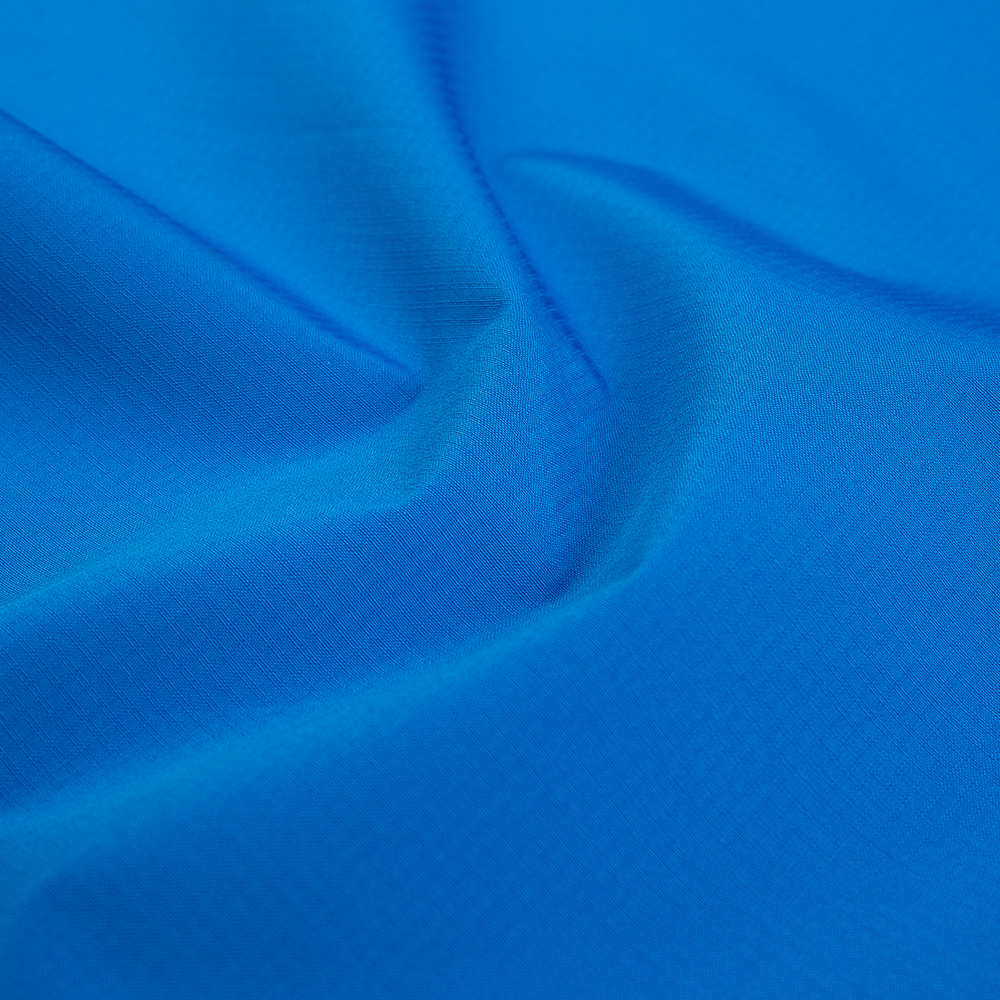Nylon Taslon fabric is a type of synthetic fabric primarily composed of nylon, specifically nylon 66. Here is a detailed look at its chemical composition and molecular structure:
Chemical Composition
Nylon 66 (Polyamide 66):
Monomers: Nylon 66 is made from two monomers, hexamethylenediamine and adipic acid, which each contribute six carbon atoms, hence the name nylon 66.
Polymerization: These monomers undergo a condensation polymerization reaction to form the nylon 66 polymer. The reaction releases water as a byproduct.

Molecular Structure
Repeating Unit:
The repeating unit of nylon 66 is represented by the chemical structure
(–NH–(CH2)6–NH–CO–(CH2)4–CO–)n
Amide Bonds:
The polymer chain consists of repeating amide groups (–CO–NH–) which form the backbone of the polymer. These amide bonds are formed between the amine group of hexamethylenediamine and the carboxyl group of adipic acid.
Crystallinity:
Nylon 66 has a semi-crystalline structure, meaning it has both amorphous (disordered) and crystalline (ordered) regions. The crystalline regions contribute to the strength and thermal resistance of the fabric, while the amorphous regions contribute to its flexibility.
Characteristics of Nylon Taslon Fabric
Textured Surface:
Taslon fabric is known for its textured surface, which is achieved through a specialized weaving process and air-texturing of the nylon fibers. This gives the fabric a softer feel and enhanced aesthetic properties.
Durability and Strength:
The molecular structure of nylon 66, with its strong amide bonds and semi-crystalline nature, provides high tensile strength, durability, and resistance to wear and tear.
Water Resistance:
While the nylon itself is not inherently water-resistant, the Taslon fabric often undergoes treatments (such as DWR - Durable Water Repellent) to enhance its water resistance, making it suitable for outdoor and performance wear.
Thermal Stability:
Nylon 66 has good thermal stability due to its high melting point (approximately 260°C or 500°F), which allows Taslon fabric to maintain its integrity under various environmental conditions.
Chemical Resistance:
The chemical structure of nylon 66 provides resistance to many chemicals, oils, and solvents, enhancing the fabric's durability in harsh environments.
Nylon Taslon fabric is made from nylon 66, characterized by its repeating amide groups and semi-crystalline structure. The polymer's strong intermolecular forces and crystalline regions provide durability, strength, and thermal stability, while the specialized texturing process enhances its surface properties and suitability for various applications.











